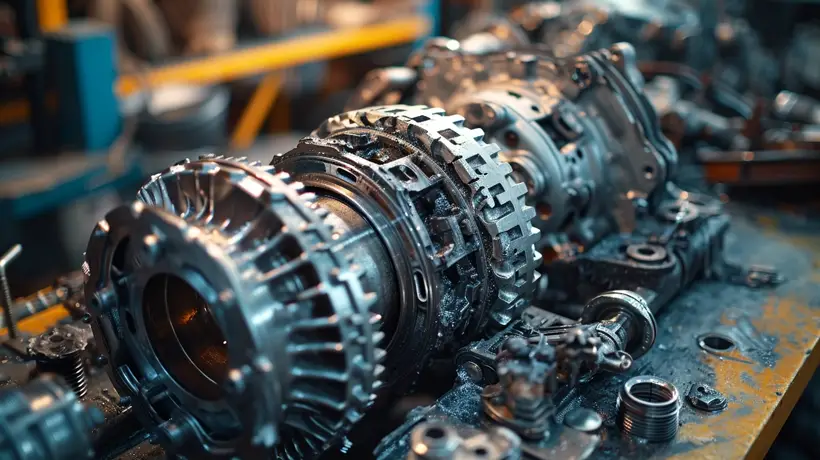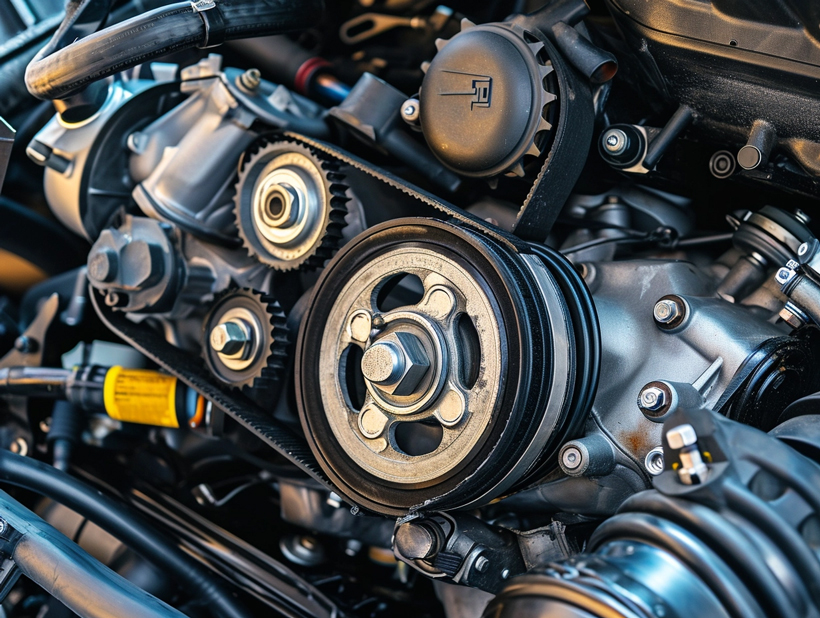Experiencing car trouble can throw a wrench in anyone’s day, especially when your manual transmission car refuses to go in reverse. I’ve been there, trust me, and it’s as frustrating as it sounds. But before you panic, let’s dive into some common issues that could be behind this pesky problem.
Knowing the ins and outs of your car’s manual transmission is crucial, and when reverse gear problems strike, it can feel like you’re in uncharted territory. I’ll help you understand why your car might be stuck in forward-only mode and what steps you can take to troubleshoot the issue.
From worn-out linkage to a damaged reverse gear, there are several culprits that could be at play. Stick with me, and I’ll guide you through the potential causes, ensuring you’re equipped with the knowledge to tackle reverse gear problems head-on.
Understanding Your Car’s Manual Transmission
When I encountered reverse gear problems in my manual car, I knew I had to get a grasp on how the transmission works. The manual transmission is a complex mechanism that relies on the driver to manually shift gears. Unlike automatics, it requires a more engaged driving experience, where I coordinate the clutch pedal, gear stick, and accelerator.
Here’s a breakdown of the key components:
- Clutch Assembly: Engages and disengages the engine’s power to the transmission.
- Gear Selector Fork: Moves the collars to select the gear I want.
- Collars: Lock gears into place on the output shaft.
- Synchronizers: Help gears to smoothly engage by matching their speeds.
- Gears: Different sized gears provide various speed and torque conversions.

Each of these parts works seamlessly together to transfer the engine’s power to the wheels. When I shift into reverse, a special reverse idler gear is used to change the direction of the output shaft, allowing the car to move backward.
But why does a car refuse to go in reverse? It could be due to a few typical issues:
- Maladjustment or wear of the clutch linkage
- Worn or damaged reverse gear
- Misalignment of the gear selector fork
Understanding the potential culprits is the first step in identifying what repair might be needed. For instance, if the clutch linkage is the problem, it usually requires a simple adjustment or replacement. However, issues with the gears themselves often mean a more involved and potentially costly fix.
To give a clearer picture, let’s look at the statistics of transmission problems from a survey I found:
| Transmission Issue | Percentage |
|---|---|
| Clutch Wear | 35% |
| Gear Degradation | 25% |
| Selector Misalignment | 20% |
| Fluid Problems | 15% |
| Other | 5% |
Addressing these issues promptly can prevent further damage. Regular maintenance, like checking the transmission fluid and ensuring proper clutch engagement, keeps the manual transmission in top condition. If I start to notice a challenge when putting my car in reverse, it’s time to investigate‚Äîbecause letting it go can lead to more significant, more expensive problems down the road.
Common Causes of Reverse Gear Problems
When you notice your car won’t engage in reverse, a few usual suspects need to be examined. The complexities of a manual transmission system make pin-pointing the issue a bit of a challenge, but I’m here to break it down for you.
Clutch System Issues often lead the pack when it comes to reverse gear problems. The clutch might not be disengaging completely, which can prevent the gears from aligning and engaging properly. This can be due to:
- A stretched or broken clutch cable
- Leaking or low clutch fluid in hydraulic systems
- Worn clutch components like the pressure plates or disc
Transmission Fluid Levels can also play a vital role. If there’s not enough fluid or it’s contaminated, the transmission might face hindrances. It’s essential to check the levels and quality of the fluid periodically.

Wear and Damage are unavoidable over time. Reverse gears can become worn or damaged because of:
- Extended use
- Improper shifting habits
- Lack of regular maintenance
Another pivotal component is the Gear Selector Mechanism. If it becomes misaligned, it’s almost certain you’ll have trouble with the reverse gear. Common manifestations include:
- Difficulty in shifting
- Grinding noises during shifts
- The car slipping out of reverse
Finally, Transmission Synchronizers might be the culprits. Though less common, if the synchronizers that aid in the smooth engagement of gears are worn out, they can impede the reverse gear from functioning effectively.
Here’s a quick reference of some potential issues:
| Issue Type | Possible Signs | Immediate Actions |
|---|---|---|
| Clutch System Issues | Difficulty shifting, no gear engagement | Check clutch cable, fluid levels |
| Transmission Fluid | Gear slippage, strange noises | Inspect fluid levels and quality |
| Wear and Damage | Trouble engaging gear, grinding noises | Assess overall transmission wear |
| Gear Selector Mechanism | Inconsistent shifting, grinding | Verify selector alignment |
| Synchronizers | Resistance during shifting, abnormal noise | Check for wear and proper function |
Regular maintenance and timely intervention when these issues first surface can often keep bigger problems at bay. Monitoring these common causes of reverse gear problems in manual transmissions and addressing them promptly ensures smoother operation and extended vehicle longevity.
Worn-out Linkage: A Possible Culprit
In my experience dealing with reverse gear issues, I’ve seen that a worn-out linkage can often fly under the radar. The linkage, essentially the connection between your gear stick and the transmission, ensures that the correct gear is engaged when you shift. When it starts to wear out or become damaged, it can lead to the inability to shift into reverse.

Symptoms of Linkage Wear
When trying to diagnose a worn-out linkage, you’ll want to look out for:
- Difficulty in gear selection: The feel of shifting isn’t as smooth as it used to be.
- Unusual noises when shifting: You might hear clunking or clicking sounds.
- Gear slippage: The car may slip out of gear uncharacteristically.
The above symptoms could easily point to a dilapidated linkage, which can impede your car’s ability to go in reverse.
Troubleshooting the Linkage
To get a better grasp on the condition of your linkage:
- Visual inspection: Check for obvious signs of wear or damage.
- Operational check: Feel the gear shift as you move it to reverse.
- Consult with a mechanic: If you’re unsure, a professional opinion can help.
Regular Linkage Maintenance
Just as with other car components, maintenance is key. Here are some tips:
- Lubricate the linkage: Keeping it well-lubricated mitigates wear.
- Regular checkups: Include the linkage in your routine maintenance checks.
- Prompt repairs: Don’t delay in addressing any issues that come up.
By keeping an eye on the condition of your linkage, you’ll be more likely to catch the early signs of wear before they lead to more severe transmission problems. Just remember, regular maintenance can go a long way in preserving the functionality of your manual transmission, and catching issues early can save you a significant amount of time, stress, and money in the long run.
Damaged Reverse Gear: Another Likely Cause
When you’re struggling with a manual transmission that refuses to engage in reverse, there’s a chance the reverse gear itself may be at fault. I’ve found that a damaged reverse gear can stem from various reasons that I’ll delve into here.
Excessive wear and tear is a primary suspect. Over time, the teeth on the gears can become worn, leading to a lack of engagement. It’s similar to trying to fit a worn key into a lock ‚Äì it just won’t turn. Extended use without proper lubrication can exacerbate the issue, grinding down the gear’s teeth until they can no longer mesh comfortably with their counterparts.
Here’s a rundown of the potential causes that might damage the reverse gear:
- High mileage: Cars with high mileage have typically endured extensive gear engagement cycles, naturally resulting in wear.
- Abrupt shifting: Forcing the gear lever into reverse without completely stopping can cause immediate, severe damage.
- Insufficient gear oil: Gear oil that’s not changed out per maintenance schedules can fail to protect the gears effectively.
- Foreign objects: Occasionally, small particles or debris can infiltrate the gearbox, causing mechanical interference.

If you suspect your reverse gear is damaged, these are some telltale signs to watch out for:
- Noise while reversing: A loud grinding or clashing sound often indicates that the gears are not aligning.
- Resistance in the shifter: Struggling to move the shifter into reverse is a common symptom of worn gears.
- Inability to engage reverse: The most obvious sign is when you’re simply unable to select reverse gear at all.
Troubleshooting and diagnosing a damaged reverse gear involve a couple of crucial steps:
- Inspect the gear visually: If possible, a peek inside the transmission could reveal if the gear is visibly worn or damaged.
- Consult a professional: When in doubt, a reputable mechanic can perform a comprehensive diagnosis to confirm gear damage.
Regular maintenance, including routine checks of the transmission fluid and cautious handling of the gear lever, is pivotal. I can’t stress enough how crucial it is to ensure proper engagement and alignment during each and every shift to minimize the risk of damage, not just for the reverse gear, but for the entire transmission system.
Steps for Troubleshooting Reverse Gear Problems
When I’m faced with reverse gear issues in my manual transmission, I know it’s crucial to approach the problem methodically. Here are the steps I take to pinpoint the issue and work towards a resolution.
First, check the transmission fluid level. Insufficient fluid can lead to a host of transmission problems, including reverse gear failure. I ensure the car is on level ground and the engine is warm before I check the dipstick. If the level is low, I top it off with the recommended type of transmission fluid.
Next, I inspect for any signs of contamination in the gear oil. Contaminations such as metal shavings or burnt odors suggest internal wear or damage. Whenever I spot these, I prepare myself for the possibility of needing more in-depth repairs.
Another aspect I scrutinize is the gear linkage mechanism. Problems with linkage or shift cables can prevent the reverse gear from being engaged properly. I usually inspect the movement of the linkage while moving the shift lever to reverse. Any abnormal play or resistance can hint at the need for adjustments or replacement parts.
I also listen for unusual noises while attempting to engage reverse gear. Growling or grinding sounds could indicate worn or damaged gear teeth.
Here’s a quick checklist I follow during the troubleshooting process:
- Ensure fluid level and quality are adequate
- Visually inspect the linkage and cable system for obvious damage
- Listen for noises that differ from the usual operation sounds
- Feel for shifter resistance that wasn’t present before
In the event of persistent problems or if the issue lies beyond my expertise, I don’t hesitate to consult a professional mechanic. They’re equipped with specialized diagnostic tools that can provide a more accurate assessment of the transmission’s health.
I make a point to keep log records of all maintenance and issues. This habit has helped me spot patterns and manage preventative care more effectively, ultimately protecting the longevity of my vehicle’s manual transmission.
